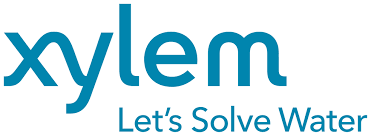4 Innovative Projects from Stockholm Junior Water Prize Finalists

As featured on Impeller | Water News from Xylem
The Stockholm Junior Water Prize brings together young innovators from around the world who have created new solutions to growing water challenges. This year, a record 33 countries have participated, presenting new solutions for water treatment, agriculture and water reuse.
Every year, the competition draws more than 10,000 entries. Each country selects one finalist to attend Stockholm World Water Week, where the winner will be announced on August 29. Xylem continues their support of the Stockholm Junior Water Prize as the Founding Global Sponsor.
This year the Stockholm International Water Institute, the organizer of the prize, has also developed a unique alumni network for SJWP finalists: WaterTank. This community brings together finalists to share ideas, build projects and be mentored by handpicked advisors.
This year’s innovative projects include an invention that uses dripping water to create energy and sterile water, a system that uses drones and the internet of things to conserve water for irrigation, and several solutions for removing pollutants from water. Here are just a few highlights from this year’s finalists.
1. Producing sterile water for medical use for developing communities
Australia
Finalist: Macinley Butson
The SOLAR SYSTEM was invented to provide both clean potable drinking water as well as sterile water for medical use. It produces its own energy, at 75 percent higher output than a conventional fixed solar panel. It utilizes a dripping water system, which is then collected and filtered to provide clean potable drinking water.
2. Removing industrial dyes from water
Bangladesh
Finalists: Rituraj Das Gupta, Aniruddha Chowdhury and Antor Chakraborty (shown above)
The textile industry is the lifeline of Bangladesh’s economy. However, its effluent discharge, constituting mainly industrial dyes, heavily affects the country’s major water bodies. The finalists focused their research on treating colored water in textile effluents. They found a cheap, feasible method that was 26 percent more effective in degrading methylene blue.
3. Using drones and IoT communication to control water for irrigation
Republic of Korea
Finalists: Eun Soo Lee and Yeokyoung Yoo
Steady water levels and optimal crop conditions are hard to maintain due to fluctuating weather conditions. By employing technology to gather data on soil moisture levels then trigger responses from water supply systems, the finalists developed a water management method that only releases water when needed and requires minimum human labor.
4. Rapidly detecting and purifying waterborne diseases
United States of America
Finalists: Ryan Thorpe and Rachel Chang
3.4 million deaths occur annually due to waterborne diseases, yet the conventional methods for bacterial detection take 1-2 days and have detection limits of up to 1,000 colonies. This study constructed a more rapid and sensitive method to detect and purify water contaminated with prevalent waterborne bacteria.

